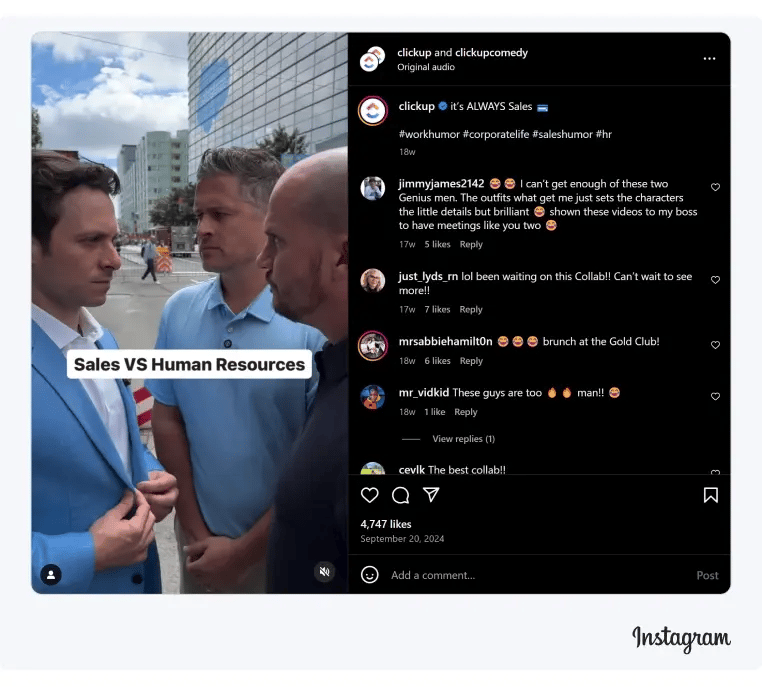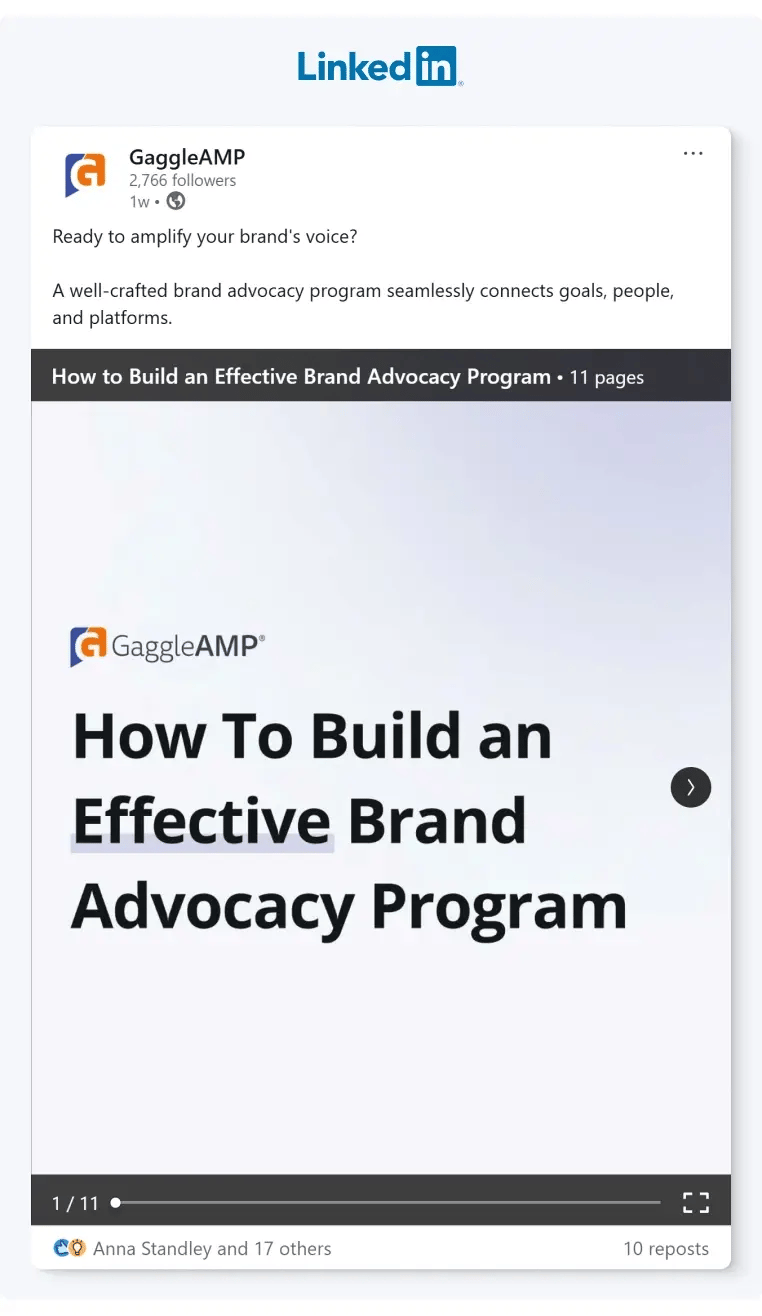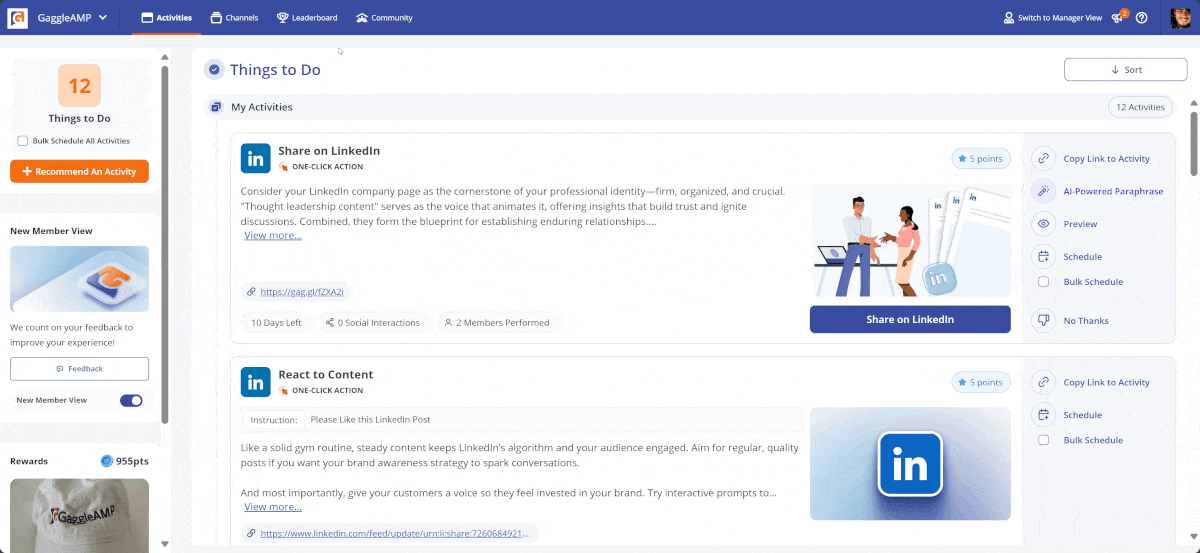Social Media Marketing Communication Strategies for B2B Brands
From buzzwords to business wins—unlocking B2B success on social media.
Social media has evolved into an indispensable tool for B2B companies looking to increase brand awareness, foster relationships, and drive measurable business outcomes. Gone are the days when social platforms like TikTok and Instagram were viewed merely as outlets for viral trends—they are now powerful vehicles for strategic marketing communication. In the B2B space, social media is less about flashy entertainment and more about delivering value, authenticity, and connection to key decision-makers.
While crafting a comprehensive social media strategy may seem daunting, the right plan can transform your efforts into a cornerstone of your marketing success. Let’s explore how to approach this.
What Are Marketing Communication Strategies?
Marketing communication strategies involve planning and executing messaging to effectively connect businesses with their audiences. These strategies are especially critical in the B2B world, where building trust and nurturing relationships with decision-makers, stakeholders, and prospects is paramount.

At their core, marketing communication strategies integrate multiple channels to deliver cohesive, impactful messaging. Key channels include:
-
Email Campaigns: Targeted outreach to foster connections.
-
Social Media: Engaging with audiences where they are most active.
-
Webinars: Providing valuable insights and establishing expertise.
-
Content Marketing: Delivering educational, actionable content.
In B2B, the goal is clear: craft messaging that aligns with business objectives—whether it’s generating leads, building brand credibility, or driving conversions.
The Role of Social Media in Marketing Communication Strategies
Social media serves as both a communication platform and an engagement hub. Integrating it into your marketing communication strategy can address traditional challenges and unlock opportunities for growth.
Building Brand Trust and Humanizing Your Company
Social media allows B2B companies to showcase their authentic side and, by staying on top of current social media trends, B2B companies foster trust and credibility. Decision-makers often prefer partnerships with brands they trust.
By sharing insights, company culture, and thought leadership, businesses can demonstrate their expertise and values.

Enabling Real-Time Engagement
Unlike traditional methods like email or whitepapers, social media facilitates two-way communication. LinkedIn posts, for example, allow brands to interact directly with audiences through comments and feedback—strengthening trust and building community. Here is a great example from Semrush engaging their LinkedIn audience in the comments:

Targeted Audience Reach
Platforms like LinkedIn offer robust targeting capabilities. Marketers can tailor campaigns based on job titles, industries, or company sizes, ensuring their messages reach the right audience as seen on this post from HubSpot:

Key Components of an Effective Marketing Communication Strategy
Optimizing a B2B social media marketing strategy requires a comprehensive approach that combines planning, audience insights, and practical execution. Each of the components below highlights essential elements to ensure your strategy not only aligns with business goals but also drives measurable results.
1. Setting Clear Objectives
Every strategy starts with well-defined goals. Align your social media objectives with broader business outcomes and use SMART criteria to guide goal-setting. For example:
-
Brand Awareness: Increase LinkedIn followers by 30% within six months. To achieve this, focus on high-quality, consistent posts, including thought leadership articles and visual content that highlights your company’s expertise.
-
Lead Generation: Drive 100 qualified leads monthly via LinkedIn ads by targeting specific job titles or industries using LinkedIn’s robust ad tools.
-
Website Traffic: Boost referral traffic from social media by 25% over the next quarter by integrating trackable URLs and promoting valuable resources like whitepapers or case studies.
A real-life example of this is IBM. They set a clear objective to increase brand awareness on LinkedIn by highlighting their expertise in AI and cloud computing. Through targeted campaigns and thought leadership posts, they saw an approximate 40% increase in engagement within three months.

2. Understanding Your Target Audience
B2B audiences demand a granular approach to segmentation. Create detailed buyer personas by identifying:
-
Job Titles and Roles: Understand who influences purchasing decisions versus who makes the final call. For instance, IT directors may research solutions, while CIOs make the purchase decision.
-
Pain Points: Determine specific challenges your audience faces. For example, HR leaders may struggle with employee retention, while CFOs prioritize cost savings.
-
Preferred Platforms: Identify where your audience spends their time. LinkedIn might be dominant, but certain roles may also frequent niche forums or platforms like Reddit.
-
Content Preferences: Explore whether your audience prefers whitepapers, short LinkedIn posts, or video tutorials. Survey results or data analytics tools like HubSpot can provide insights into their preferences.
A case study by Narrato revealed how HubSpot successfully tailored its content strategy by creating personas for marketing managers and sales directors. By addressing specific pain points like lead generation and customer retention, they achieved a 60% increase in qualified leads from social media.

3. Selecting the Right Platforms
Focus your efforts on platforms where your audience is most active:
-
LinkedIn: Ideal for networking and thought leadership. Posts could include whitepapers, customer success stories, and thought leadership pieces.
-
X (formerly Twitter): Effective for sharing timely updates, news, or bite-sized tips for industry professionals.
-
YouTube: Perfect for hosting webinars, tutorials, and behind-the-scenes videos of product development.
-
Instagram: Useful for humanizing your brand by showcasing company culture, events, and employee testimonials. ClickUp is a great example on how to leverage the platform by post funny, engaging videos that not only highlight their company culture but also demonstrate the versatility of their productivity tools.

Pro Tip: Avoid spreading yourself too thin—prioritize consistency and platform-specific strategies.
4. Creating Valuable Content
Content lies at the heart of any successful strategy. An organic social media strategy can drive engagement and add authenticity to your content marketing efforts.
B2B audiences value education and actionable insights over hard-sell tactics. Examples include:
-
Thought Leadership: Publish LinkedIn articles or videos showcasing expertise. For instance, share trends in AI integration or sustainability in manufacturing.
-
Case Studies: Share real-world success stories to build credibility. Highlight how a company solved a specific issue with measurable results.
-
How-To Guides: Solve common industry problems, such as guides for implementing new tech tools or compliance best practices.
5. Leveraging Employee Advocacy
Employee advocacy is a powerful strategy where employees actively promote their brand's products, or services through their personal social media channels. This approach not only amplifies the company's reach but also adds a layer of authenticity to the messaging.
-
Training: Equip employees with the knowledge and skills to effectively represent the brand on social media. For example, provide LinkedIn optimization workshops and explain best practices for engaging with professional audiences.
-
Content Libraries: Provide a repository of pre-approved, shareable content that employees can easily access. This ensures consistency in messaging and makes it convenient for employees to participate in advocacy efforts.
-
Recognition Programs: Implement systems to acknowledge and reward employees who actively engage in advocacy. This could be through gamification elements like leaderboards, badges, or tangible incentives, such as gift cards or company swag.
By implementing structured employee advocacy programs, companies can harness the power of their workforce to enhance brand visibility, build trust with audiences, and achieve measurable business outcomes.
6. Implementing a Content Calendar
A well-structured social media content calendar is key to ensuring consistency and aligning content with strategic goals. It helps marketers stay organized and ensures every post serves a purpose. Key steps include:
-
Defining Frequency: Establish a regular posting cadence, such as daily or weekly, to maintain visibility.
-
Content Categories: Plan diverse content types like thought leadership, customer success stories, industry trends, or timely updates.
-
Tool Integration: Use platforms like GaggleAMP or Hootsuite to schedule posts and track performance metrics, ensuring you remain agile and strategic.
7. Engaging with Your Audience
Engagement fuels social media success. Instead of broadcasting, focus on conversations. Tactics include:
-
Respond Promptly: Answer comments and direct messages quickly to foster trust.
-
Join Industry Discussions: Participate in trending topics or share insights in comment threads to establish thought leadership.
-
Interactive Posts: Start polls or Q&A sessions to encourage two-way engagement, increasing visibility.

8. Integrating Visual Storytelling
Visual content is essential for capturing attention in a crowded social media landscape. Leverage:
-
Videos: Showcase behind-the-scenes moments, product tutorials, and customer testimonials to build connection.
-
Infographics: Break down complex ideas into easily digestible visuals, making technical concepts more accessible.
-
Carousels: Use LinkedIn carousels to provide step-by-step guides or share impactful statistics and insights in a visually compelling format.

Pro Tip: Adding variety to your content not only increases engagement but also appeals to different learning preferences among your audience.
Common Challenges in B2B Social Media Strategies
Despite its benefits, social media for B2B marketing comes with its challenges. Businesses often encounter the following roadblocks:
1. Inconsistent Messaging
Maintaining a unified voice across multiple platforms can be difficult, especially when teams are distributed or rely on manual processes. Inconsistent messaging weakens brand trust and recognition — a challenge best addressed with a clear social media policy that establishes tone and content boundaries.
2. Low Employee Engagement
Getting employees involved in advocacy programs can be a challenge. Lack of motivation, unclear expectations, or insufficient training often result in minimal participation, reducing the potential reach of employee-shared content.
3. Measuring Impact Effectively
Unlike direct sales metrics, social media impact can be harder to measure. Businesses struggle to link engagement metrics like likes and shares to meaningful outcomes like lead generation or conversions.
4. Overcoming Content Fatigue
With so much content being produced daily, standing out and keeping your audience engaged requires constant innovation. Many B2B companies face difficulty sustaining fresh, relevant, and high-quality content over time.
5. Lack of Strategy Alignment
Social media efforts often operate in silos, disconnected from broader marketing and business goals. Without alignment, companies miss opportunities to maximize ROI.
Addressing Challenges with GaggleAMP
Tools like GaggleAMP can help overcome these obstacles by streamlining and enhancing social media efforts. Let’s dive deeper into how each feature can make a difference:
-
Gamification and Training: GaggleAMP’s gamification tools, such as leaderboards and reward systems, make participation fun and engaging for employees. Adding a competitive edge motivates team members to actively share and engage with content. Moreover, the platform’s built-in training modules simplify onboarding and ensure that employees feel confident in their advocacy efforts.
-
Analytics Dashboards: The analytics tools provide comprehensive insights into engagement rates, audience reach, and referral traffic. By analyzing this data, marketing teams can identify top-performing content and refine their strategies to focus on what resonates most with their audience. This feature also helps link advocacy efforts to tangible business outcomes, such as lead generation and conversions.

-
Scheduling and Automation: Manual scheduling can be time-consuming and prone to errors. GaggleAMP’s scheduling tools allow marketers to plan and automate posts across multiple platforms in advance. This ensures consistency, reduces the workload on social media managers, and allows them to focus on higher-level strategy.
-
AI-Powered Paraphrasing: GaggleAMP’s AI-powered paraphrasing tool enables both managers and employees to create unique variations of core messages while preserving the original intent. This feature allows employees to personalize content effortlessly, ensuring that posts feel authentic while reducing redundancy across social platforms. By leveraging AI, marketers and advocates alike can streamline content creation and keep their messaging fresh and engaging.

By incorporating tools like GaggleAMP and utilizing a structured social media content calendar, businesses can overcome these challenges, amplify their reach, and drive measurable results across platforms.
Take Your B2B Social Media Efforts to the Next Level
Mastering B2B social media strategies requires a thoughtful approach that combines clear objectives, audience insights, platform-specific tactics, and engaging content. Leveraging tools like GaggleAMP can help address common challenges, from improving employee advocacy to maintaining consistent messaging across platforms. By incorporating features like AI-powered paraphrasing, robust analytics, gamification, and social media templates, businesses can simplify execution while enhancing impact.
Start transforming your social media strategy today! Sign up for a GaggleAMP demo and discover how it can amplify your results and streamline your efforts.













